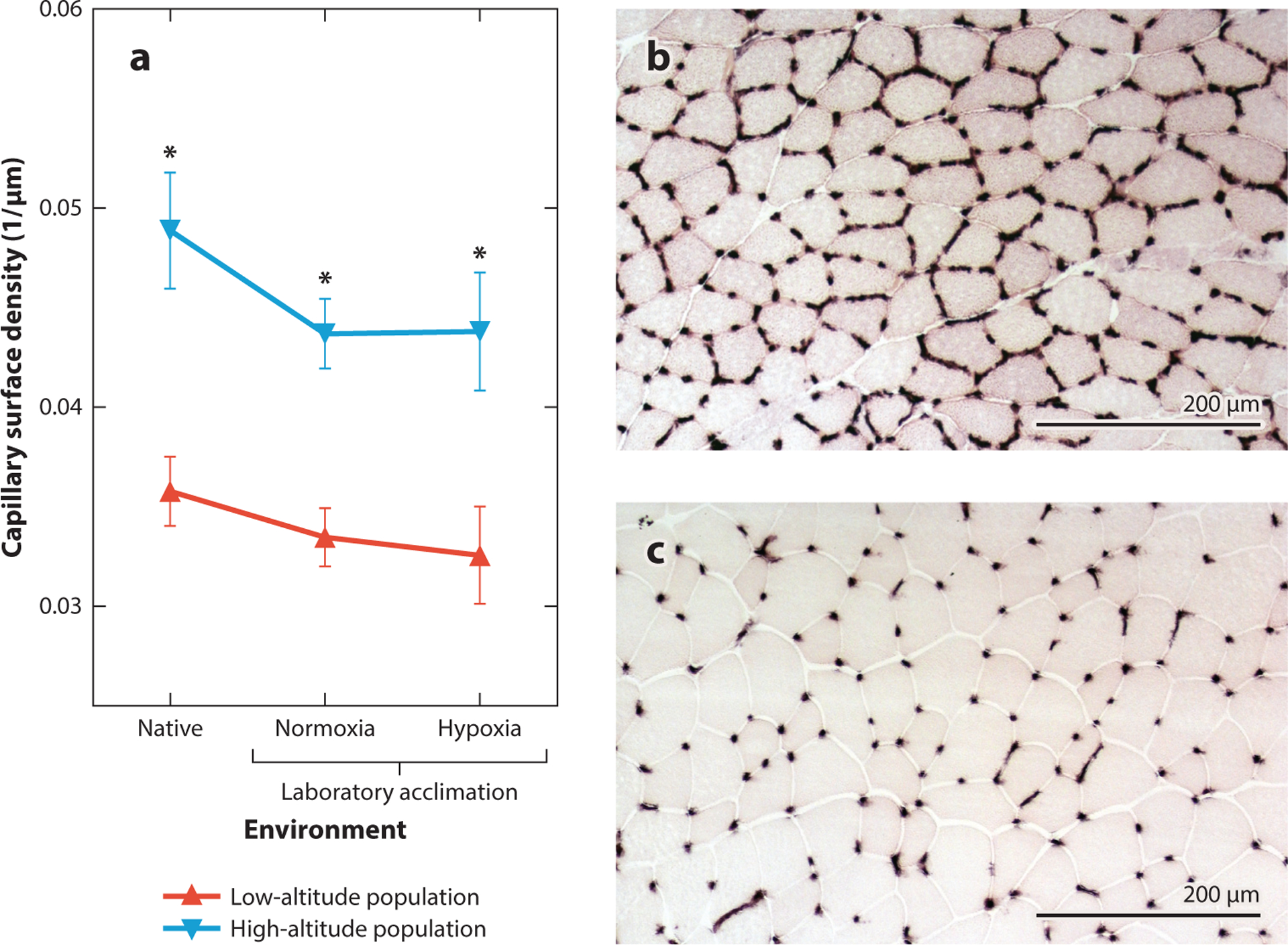Figure 4.

High-altitude deer mice have evolved a fixed increase in the capillarity of the gastrocnemius muscle. (a) Experimental tests revealed a significant main effect of population (F1,70 = 41.15, P < 0.0001) on capillary surface density (μm of capillary surface per μm2 of transverse muscle area) but no significant main effect of environment (F2,70 = 1.97, P = 0.147) or population × environment interaction (F2,70 = 0.24, P = 0.789). Data from Lui et al. (2015) and Scott et al. (2015a). Two-factor analysis of variance with Bonferroni posttests were used for statistical comparisons, and * represents a significant pairwise difference between populations within an environment (P < 0.05). (b,c) Representative images of capillary staining using alkaline phosphatase activity in wild-caught highland (b) and lowland (c) deer mice, each shown at the same scale.
